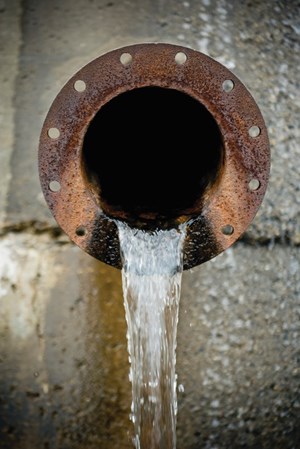$452 billion needed to replace half a million miles of aging North American water mains, report finds
(UI) – According to a new survey from Utah State University, “nearly 20% of installed water mains in the U.S. and Canada are beyond their useful lives and have not been replaced because of inadequate funding,” the American Society of Civil Engineers (ASCE) reported.

The survey highlighted significant challenges in infrastructure maintenance. With 260,000 breaks annually, costing $2.6 billion, many aging water mains remain unreplaced due to funding shortages, totaling an estimated $452 billion needed for replacement.
The study, the largest of its kind, emphasizes the necessity of asset management programs. Titled Water Main Break Rates in the USA and Canada: A Comprehensive Study, the survey included water utilities serving over 30% of the population of the U.S. and Canada. These utilities represent nearly 400,000 miles of water main pipe. That’s over 17% of the estimated 2.3 million miles of water mains in the U.S. and Canada, ASCE reported.
Nearly half a million miles of water mains are “beyond their useful lives,” but lack funding necessary to rehabilitate the aging infrastructure, the survey concluded. The average failing water main age is 53, which is concerning given that 770,000 miles of pipe are over 50 years old in the U.S. and Canada.
While overall break rates have decreased by 20%, possibly due to decreased use of problematic materials like cast iron and asbestos cement, challenges persist, particularly with corrosive soils affecting ductile iron pipes.
PVC is the most-used piping material with the lowest annual failure rate. Other materials with higher failure rates include asbestos cement, cast iron, steel, and ductile iron, the survey found.
The study also notes higher break rates in smaller-diameter distribution mains compared to larger transmission mains, despite utility size not correlating with break rates. The report underscores the importance of proactive maintenance and investment in infrastructure to ensure reliable water distribution systems.
This story was originally reported by the American Society of Civil Engineers.
Related News
From Archive

- Glenfarne Alaska LNG targets late-2026 construction start for 807-mile pipeline project
- U.S. water reuse boom to fuel $47 billion in infrastructure spending through 2035
- $2.3 billion approved to construct 236-mile Texas-to-Gulf gas pipeline
- Major water pipe break in Puerto Rico hits over 165,000 customers
- Potomac River Tunnel project enters construction phase beneath Washington, D.C.
- Pennsylvania American Water launches interactive map to identify, replace lead water service lines
- Trump's tariffs drive $33 million cost increase for Cincinnati sewer project
- Utah city launches historic $70 million tunnel project using box jacking under active rail line
- Tulsa residents warned after sewer lines damaged by boring work
- Fatal trench collapse halts sewer construction in Massachusetts; two workers hospitalized



Comments